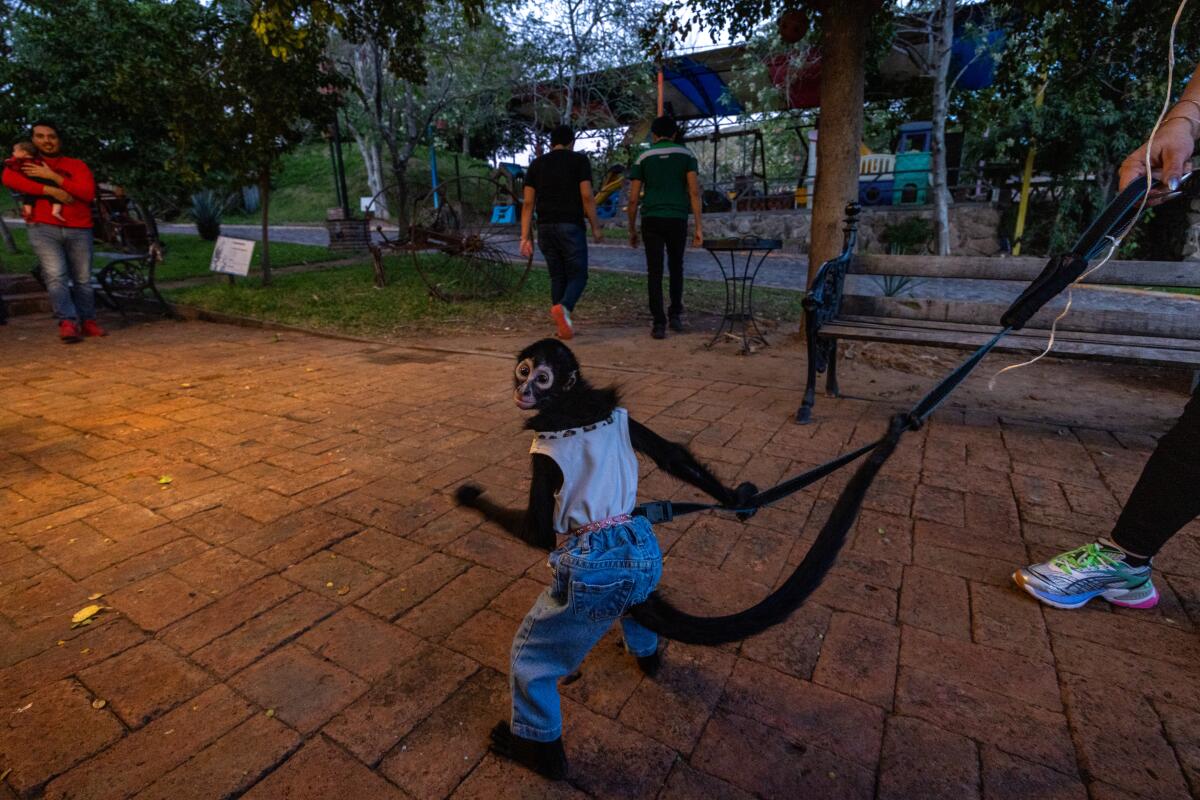How doomed is San Francisco? Some say rumors of the city’s downward spiral are greatly exaggerated
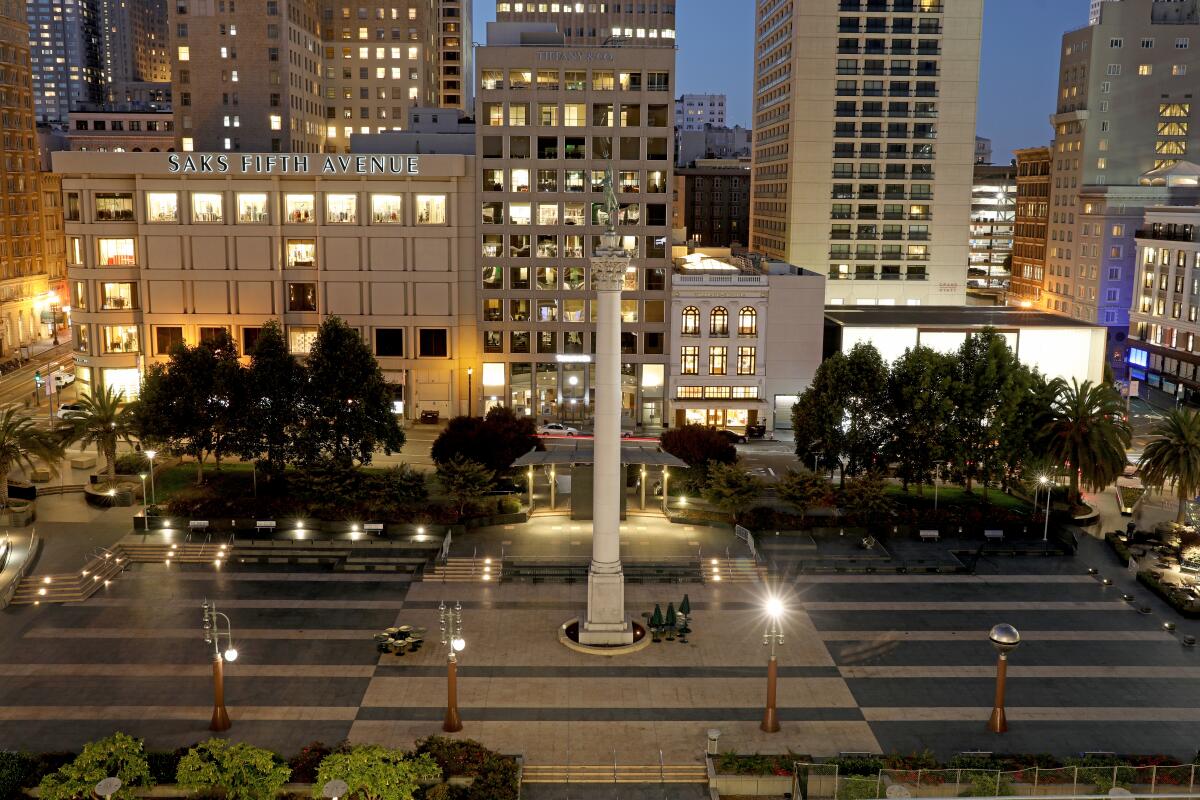
Good morning. It’s Thursday, Jan. 18. Here’s what you need to know to start your day.
- Is San Francisco really doomed? Depends who you ask
- No Beverly Hills housing improvements without more affordable housing
- SoCal’s forgotten hot springs oasis is finally reopening
- And here’s today’s e-newspaper
Sign up for Essential California
The most important California stories and recommendations in your inbox every morning.
You may occasionally receive promotional content from the Los Angeles Times.
Is San Francisco really doomed? Depends who you ask
Let’s start with what most people agree on: the pandemic hit cities hard — and San Francisco especially hard.
Many workers in the city’s bustling tech sector traded their downtown office for a desk at a home with lower rent and more space out of town — or out of state. The exodus set off a chain reaction that impacted the coffee shops, restaurants and other businesses that depended on foot traffic downtown.
Then came the headlines about a city in a doom loop. And the conservative right’s narrative of a failed city rampant with homelessness, open drug use and crime that only had its own liberal policies to blame.
But the city still has its defenders. They smell a comeback, claiming that “cycling through booms and busts is just a natural part of San Francisco’s rhythms,” Times Bay Area and North Coast reporter Hannah Wiley wrote this week.
The next boom they’re eyeing: artificial intelligence.
“Several tech leaders interviewed — some have spent decades in Silicon Valley, others are newcomers to the region — argue San Francisco and the Bay Area more broadly remain a thriving nerve center of talent, institutional knowledge and bountiful venture capital,” Wiley reported.
It’s not just optimistic tech folks. Wiley pointed to some recent data that challenge the downward spiral narrative.
First, more people are moving into San Francisco and neighboring counties in the Bay Area than moving out. That’s notable, as the state of California overall lost more residents than it gained in recent years. The cost of housing has also fallen.
And it’s always wise to follow the money, as Wiley did.
“The Bay Area last year maintained its top national ranking for venture capital investment, followed by Boston and New York, according to an October report by Ernst and Young, buoyed in part by investments in artificial intelligence,” she noted.
There may be some positive signs for tech, but the pandemic recovery hasn’t been great for everyone. One group of residents the city continues to lose: people 25 and older without a college degree.
Some people Wiley spoke with were more cautious about the city’s fortunes, pointing to notable office vacancy rates and lower in-person worker attendance.
“Downtown before the pandemic was a pretty rich ecosystem. But at the core of it was people coming to work in offices,” Ted Egan, San Francisco’s chief economist, told her. “Until you get that back, it’s going to be hard to restart a positive dynamic flywheel downtown.”
Still, there’s a sense from some that the city is slowly but surely moving into a new era.
Here’s one bright spot (or maybe soft spot?) that stood out to me: the revitalization of United Nations Plaza into a destination for skateboarders. If you want to bring fresh energy into an urban core, it turns out skateboarding might just do the trick.
You can read more from Wiley on San Francisco optimism.
Today’s top stories
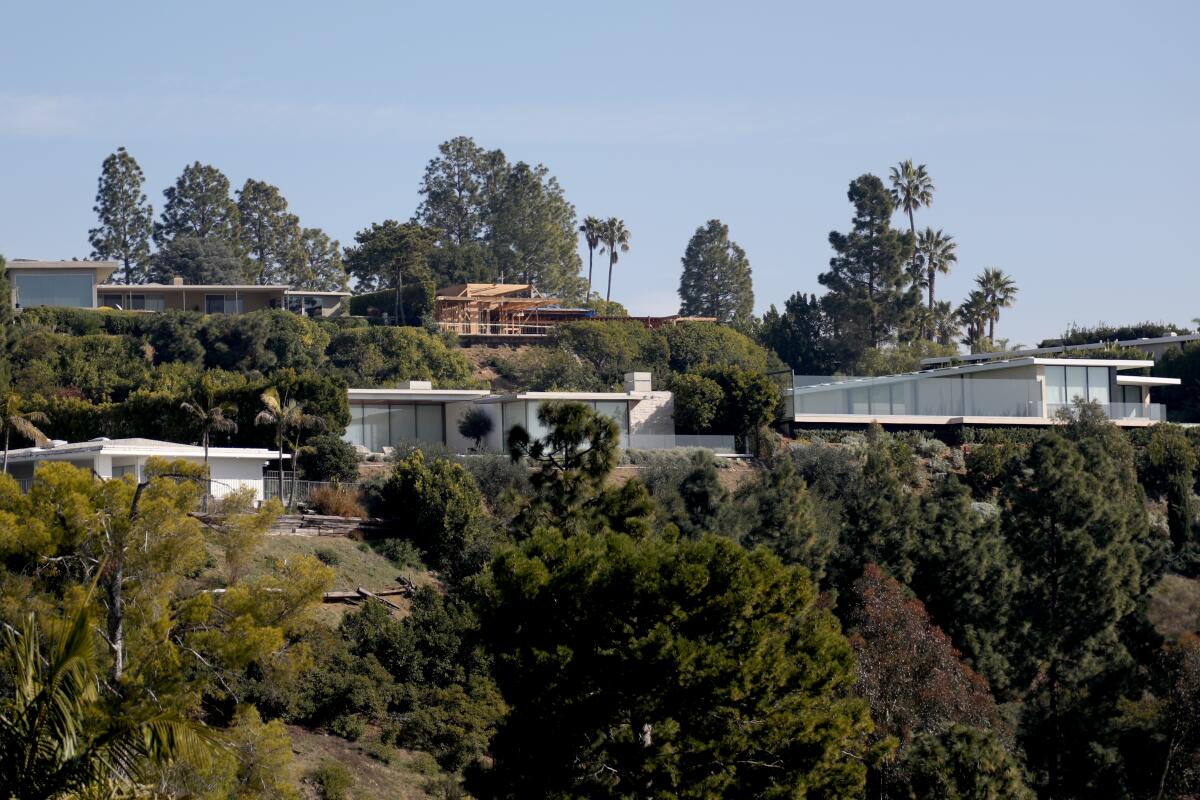
Courts and crime
- Last month, a Los Angeles County Superior Court judge issued a moratorium on building permits in Beverly Hills as punishment for the city not passing a blueprint for sufficient affordable housing.
- Floyd Mayweather Jr. was sued by a man who alleges his bodyguard assaulted him at L.A. Live Yard House.
- Rebecca Grossman trial: Lawyer says police didn’t check the other car in the crash that killed 2 brothers.
Climate and environment
- Southern California’s wood-burning ban was extended as a “lid” locks in hazy and polluted air.
- Backers who want to build a green city from scratch began with secretive land purchases in Solano County. Now they are trying to sell Solano County voters on the project.
- California’s water-saving plan was slammed as costly, complicated and unrealistic.
California politics
- Voters say California’s budget deficit is an “extremely serious” problem, a new poll finds.
- Proposed California legislation that would ban tackle football for kids under 12 had gained momentum until Gov. Gavin Newsom made it clear he’d veto the bill.
More big stories
- A San Bernardino County immigrant detention facility at risk of permanent closure will remain open until at least mid-June, U.S. Immigration and Customs Enforcement said.
- Internet trolls flooded UC Irvine chat groups with gore. Then students mounted a counterattack.
- Despite California exodus, the well-off and well-educated still flock here. Will they stay?
Get unlimited access to the Los Angeles Times. Subscribe here.
Commentary and opinions
- Michael Hiltzik: Will billionaire Bill Ackman ever learn to shut up?
- Robin Abcarian: The Iowa caucuses deliver delusions.
- Opinion: California’s great strides in Medi-Cal expansion are threatened by system inefficiencies.
- Brian Merchant: The George Carlin auto-generated comedy special is everything that’s wrong with AI right now.
- Sammy Roth: Meet John Curtis, the Utah Republican who cares about climate change.
Today’s great reads
Lions, tigers and a monkey in a bullet-proof vest: Meet the exotic pets of Mexico. In Sinaloa, Mexico, home to one of the world’s most powerful drug cartels and famed for ostentatious displays of wealth, people clamor for exotic animals.
Other great reads
- Eight hours and 21 dishes with Mr. Chow, L.A.’s most captivating restaurateur.
- Sobriety, colonoscopies and fighting the MAGA agenda: Green Day on making a racket in 2024.
How can we make this newsletter more useful? Send comments to [email protected].
For your downtime
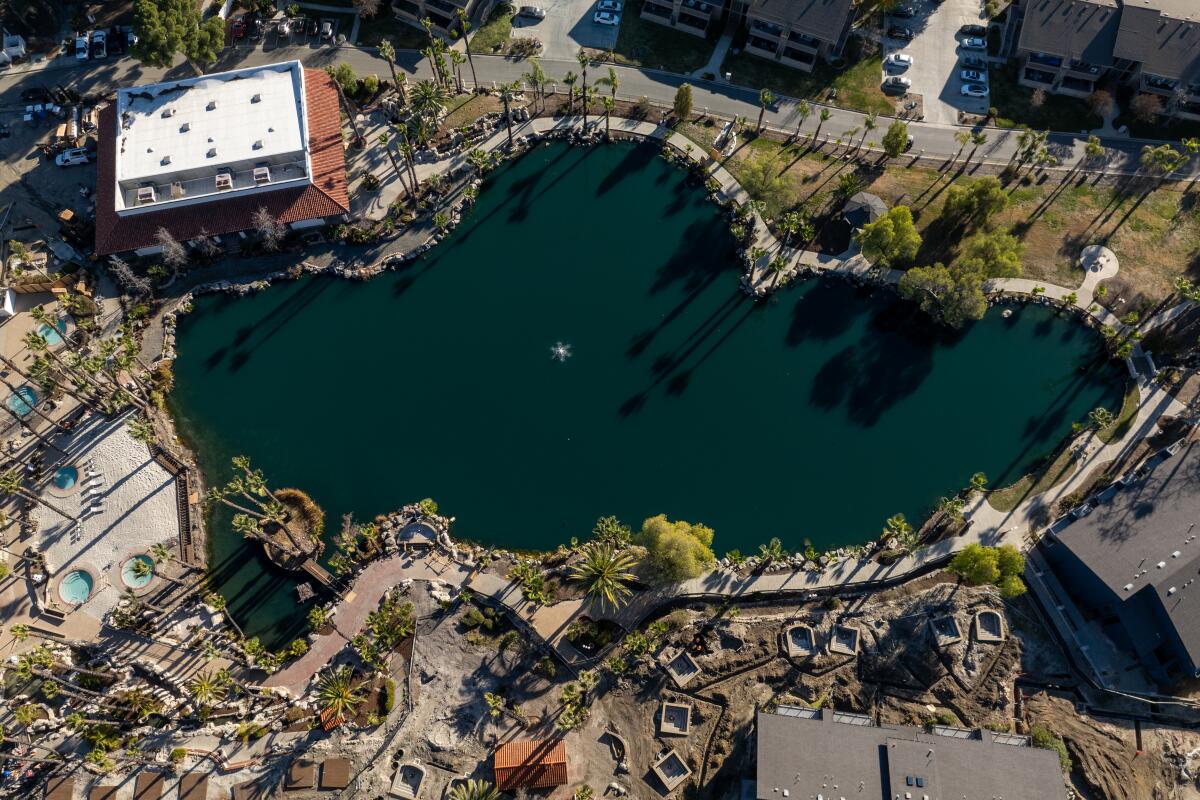
Going out
- ♨️ SoCal’s forgotten hot springs oasis is finally reopening — with 50 geothermal pools.
- 🐈 Big cats, little cats, weird cats collide at this purrfect L.A. experience.
- 🥗 30 of the best vegetarian and vegan restaurants in L.A.
Staying in
- 📖 How California’s worst fire season — so far — became a writer’s most powerful metaphor.
- 🍤 Here’s a recipe for rice noodle-crusted “coco” fried shrimp.
- 📲 Moms and non-binary parents, join our early childhood education team in this new L.A.-based moms group on Facebook.
- ✏️ Get our free daily crossword puzzle, sudoku, word search and arcade games.
And finally ... from our archives
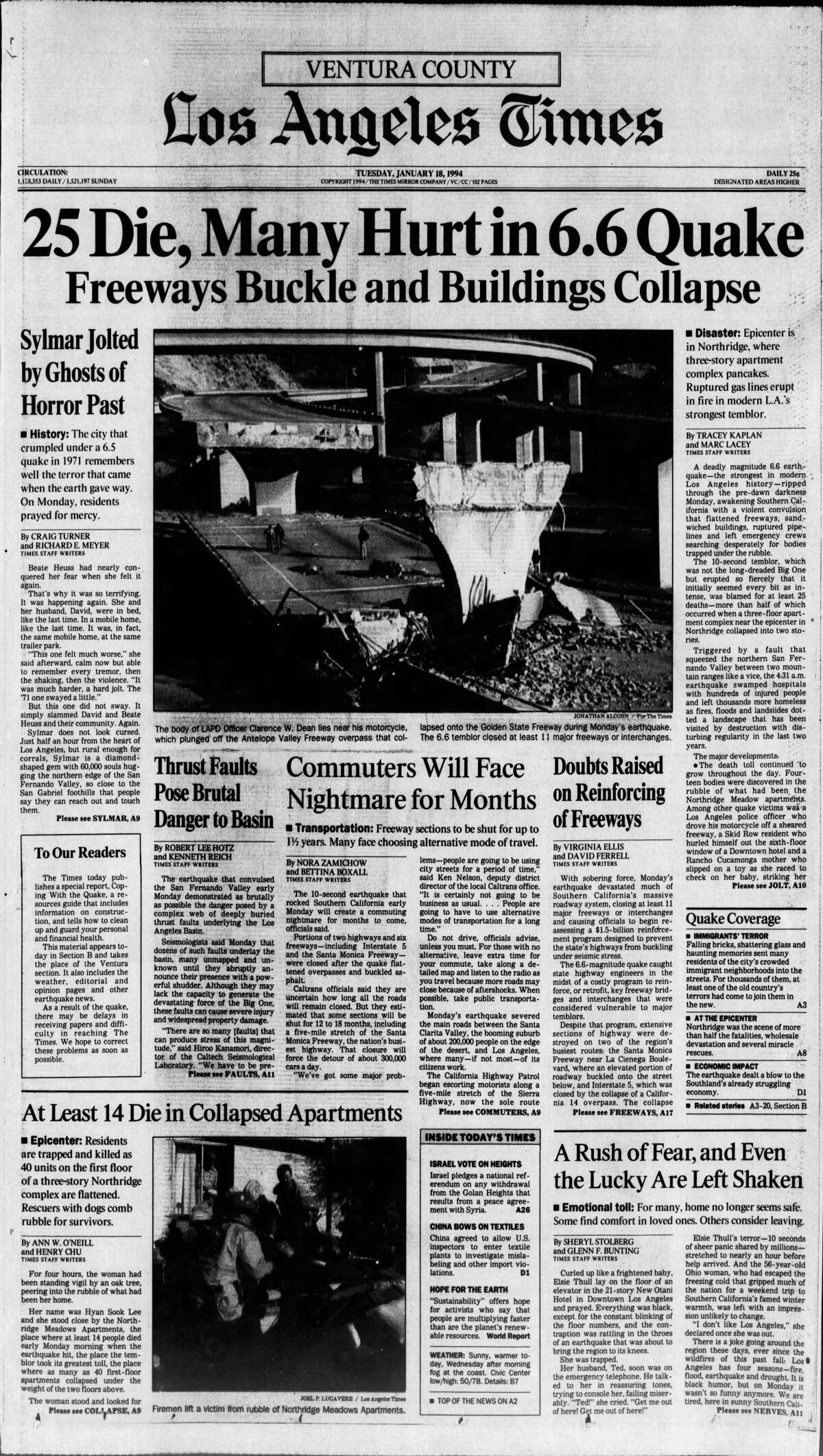
Here’s the front page of The Times, 30 years ago today. After the 6.7 magnitude Northridge quake killed 60 people and damaged large swaths of the county, radio broadcasts and newspapers were one of the few sources of information residents had. The Times published the day after the earthquake and continued to publish as Los Angeles began to recover. This week, Times news and culture critic Lorraine Ali wrote about surviving Northridge, noting “the sound of the paper being tossed onto driveways provided a semblance of normalcy in the chaos.”
Have a great day, from the Essential California team
Ryan Fonseca, reporter
Elvia Limón, multiplatform editor
Kevinisha Walker, multiplatform editor
Laura Blasey, assistant editor
Check our top stories, topics and the latest articles on latimes.com.
Sign up for Essential California
The most important California stories and recommendations in your inbox every morning.
You may occasionally receive promotional content from the Los Angeles Times.
